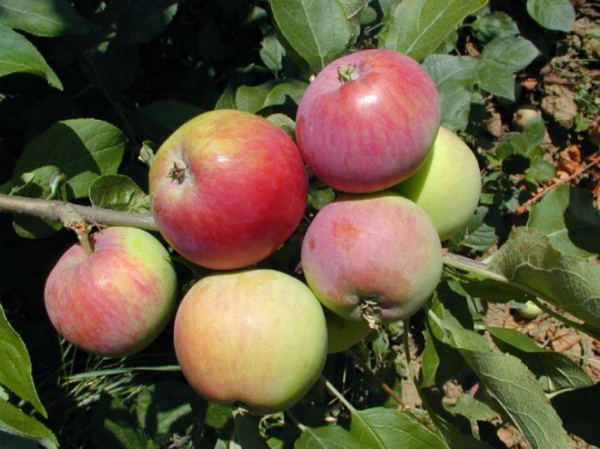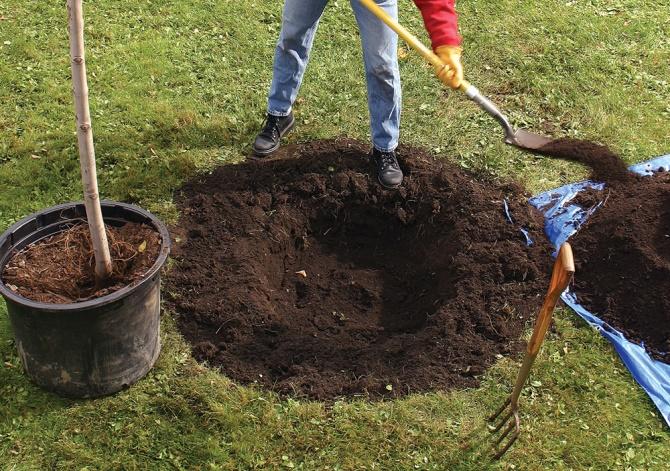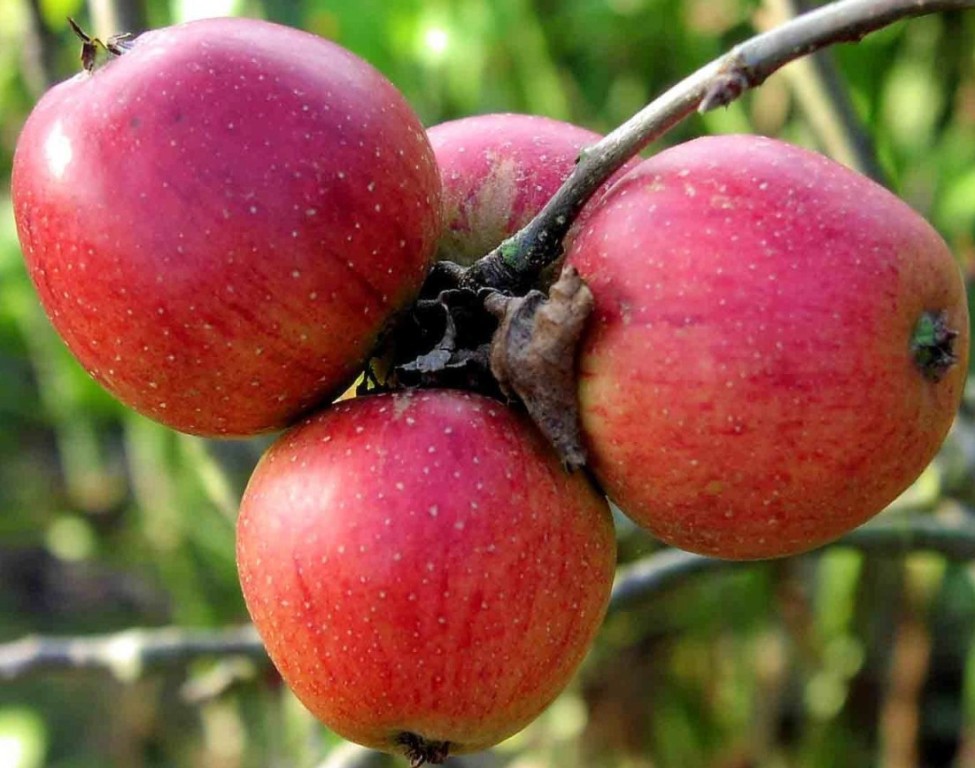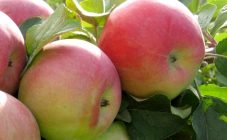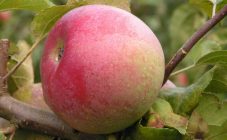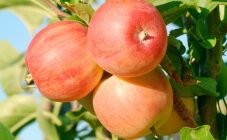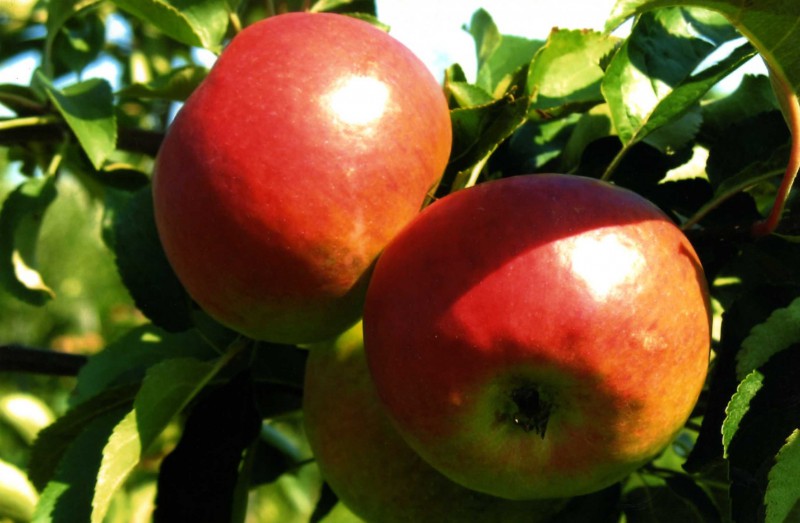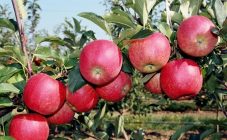Content:
It is difficult to imagine a private courtyard without apple trees. Today, breeders have developed their own varieties of apples for each region. Along with the novelties, time-tested varieties are grown. For central Russia, the Mantet apple tree has long become familiar. Its fruits can be eaten fresh, compote and apple jam can be cooked from them.
The history of the creation of the variety
Most often, an apple tree is a small tree with a spreading crown. It contains generative and vegetative shoots at the same time. The leaves, depending on the variety, can be different in size and shape, but they are always arranged alternately on the branches. Flowers, white with a pink tint, are pollinated by bees and some other insects.
The fruits of all varieties are different in appearance, taste, aroma and size.
Wild apple trees can often be found in the forest. Cultural varieties are grown in the gardens. In Russia, this fruit tree is more popular than in other countries. The apple tree is not demanding on the quality of the soil and grows on almost any land.
The Mantet hybrid was bred back in 1928 by natural pollination of Grushevka Moscow. This was done by Canadian breeders at the experimental station in Morden. In the state register, the variety is recorded as zoned for cultivation in the Central and Middle Volga regions. Such properties of the ancestor as winter hardiness and tallness were lost, but the Mantet apple tree began to give larger and sweeter fruits.
Characteristics of the Mantet apple tree
This variety is distinguished by average growth rates, the trees reach a height of 4.5-5 m, therefore they are ideal for small areas. According to Mantet's description, the apple tree has the following characteristics:
- An oval crown is formed by strong, upwardly directed skeletal branches. Leafiness of medium density.
- The leaves are shiny, leathery, large, with a serrated edge.
- The flowers are large, fragrant, have a bluish tint.
- Fruits are rounded-oblong, ribbed at the base, with an average weight of 120-160 g. The skin is greenish or yellow, covered with a red speckled blush.
- The Mantet apple variety has a white flesh, tender, juicy, and has a pleasant aroma. Her taste is sweet, with a slight sourness.
The harvest ripens at the end of July, but in bad weather this period can be shifted to mid-August. With good care, the yield from one apple tree is 50-70 kg. Young trees bear fruit more modestly. The tree reaches its maximum yield at 15 years old and continues to bear fruit abundantly until 30-40 years, then the indicator steadily decreases.
The winter hardiness of the Mantet apple tree is average, it can withstand a maximum of -25 ° C and can freeze even at -15-18 ° C. The variety has low scab resistance. In unfavorable wet weather, apple trees are easily affected by this disease. Resistance indicators are average for other diseases.
Landing features
Since Manten is not a very hardy apple tree, it is recommended to plant it in spring. The best time for this is the first half of April. Choose a bright, wind-protected place. It is desirable that the land be loose and breathable, with a low level of groundwater.In areas prone to flooding, it is recommended to create an artificial hill for planting this apple tree.
In any case, it is recommended to lay a drainage layer at the bottom of the planting pit. It can consist of broken brick, gravel, vermiculite. The pit is prepared 2 weeks before planting. If a gardener plants several apple trees at once, the distance between them should be at least 3 m. The dimensions of the pit should be 80-90 cm deep and 100 cm wide.
The fertile soil layer is mixed with 3 buckets of humus and 1 kg of wood ash. From fertilizers, 250 g of superphosphate and 100 g of potassium sulfate are added. The mixture is poured into a pit, a layer of earth is laid on top and 1 bucket of water is poured. In 2 weeks, the mixture will settle in the pit and a hole for the apple tree is formed.
A two-year-old seedling with 3-5 branches is best suited for planting. Shoots should be directed in different directions. The bark and roots should be free from damage and signs of disease. It is good if the rhizome consists of skeletal and fibrous roots 30 cm long. Planting procedure:
- A peg is driven into the bottom of the pit for a sapling garter. It is better to place the support on the north side. The peg should rise 70-80 cm above the ground.
- The seedling is placed vertically in the pit, with the roots straightened out. After planting, the root collar should be 5-8 cm above the soil surface.
- The pit is covered with earth and slightly compacted.
- The seedling is tied to a peg. It will be possible to remove the support in 2 years.
Upon completion of planting, a young apple tree is watered with 3 buckets of water and mulched with peat, humus or crushed dry grass.
Care rules
Caring for an apple tree comes down to watering, feeding, pruning, and protecting against pests. All procedures should be performed regularly - this will ensure good growth and health of the apple tree.
Watering
It is necessary to water the apple tree 4 times per season. 6-7 buckets of water per square meter are poured under an adult apple tree. In hot weather, the volume of water is doubled. The first time watering is done before flowering, the second time - in mid-June, the third - when the fruits are poured, the fourth - in the middle of autumn. After watering, the soil in the near-stem circle is loosened and covered with a fresh layer of mulch.
Top dressing
In order for the tree to grow and form well, it needs feeding. Fertilizer solutions are applied to dry soil, and minerals in granules are scattered on the soil after rain or watering.
In April, you can feed the apple tree by sprinkling 0.5 kg of urea, and after watering it with a mullein solution. Depending on the age of the tree, you will need 3 to 10 buckets of this fertilizer.
Around the middle of summer, under the apple tree, you need to add a solution of 2 buckets of water, 0.5 kg of nitrophoska and 5 g of sodium humate. In September, the ground under the apple tree is sprinkled with a mixture of 350 g of superphosphate and the same amount of potassium sulfate.
Pruning
Pruning is done in early spring, in the middle of summer and on the eve of frost. Frozen and damaged shoots are cut out in March. In July, they get rid of excess growth by breaking out and pinching the shoots. In autumn, the lateral branches are shortened, giving the crown a rounded shape. All large sections must be covered with garden var.
Protection from pests and diseases
Periodic digging of soil in the trunk circle and timely harvesting of fallen leaves will reduce the risk of morbidity. Of the diseases, the greatest danger to the apple tree is scab. When symptoms appear, the branches should be sprayed with a solution of Bordeaux liquid or fungicide. If the fruits are affected by moniliosis (rot), it is necessary to process with copper sulfate.
Aphids can be fought in a folk way. The foliage is sprayed with soapy water. The apple mite is taken out with an infusion of onion husks, and in early spring they pour boiling water over the apple tree. You can cope with a leaf roll with a tincture of wormwood. To protect the stem from rodents, it is whitewashed with lime with the addition of copper sulfate and clay.
Advantages and disadvantages of the variety
Summer residents consider the advantages of the variety to be the compact size of the trees, the moderate need for pruning due to slow growth, the good transportable qualities of the fruits and their taste. Due to the high sugar content in apples, it is not required to add a lot of granulated sugar when making blanks.
The disadvantages of this varietal variety include labor-intensive harvesting due to vertically arranged branches, unstable fruiting in adulthood, uncooked ripening of fruits, weak winter hardiness and susceptibility to scab in rainy weather. Also, the branches can break off under the weight of the fruit, and the apples themselves become smaller with a high yield.
With proper planting and proper care, the Mantet apple tree will definitely delight you with a good harvest. This variety has already been tested by many generations of summer residents and its popularity speaks for itself.
